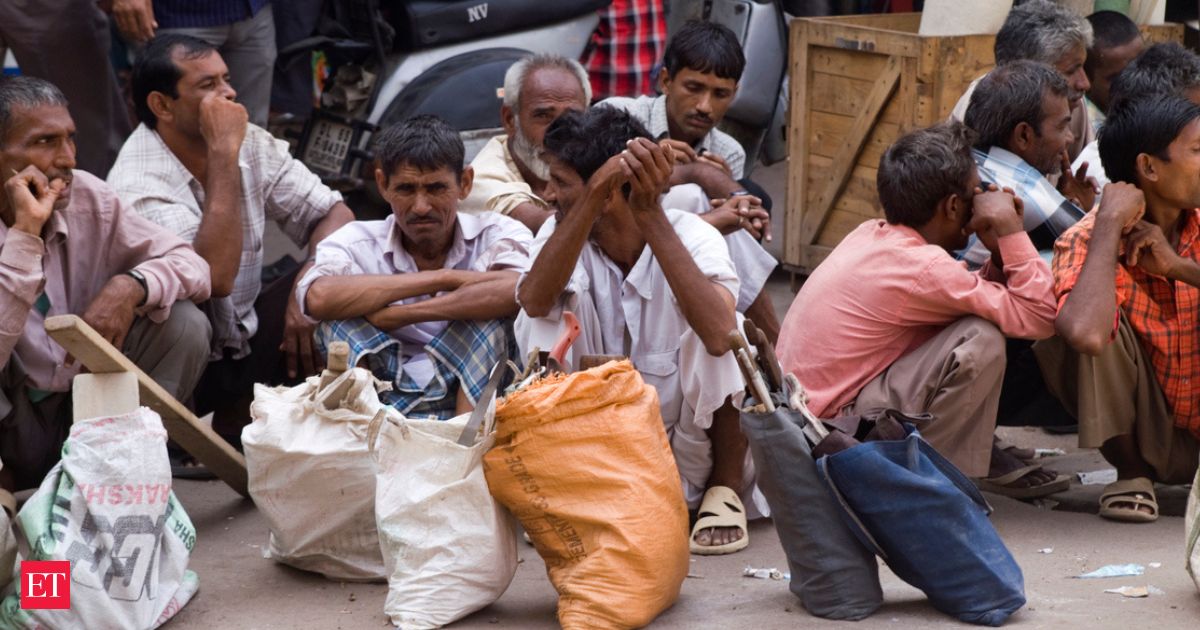Congress leader Rahul Gandhi recently said unemployment was one of the reasons behind the Parliament security breach on December 13, a charge that was strongly rebutted by the government. The government referred to official data to emphasise that the unemployment rate has actually been declining in the country. But how exactly does the government collate and present the unemployment data? How often does it come out with employment statistics? ET explains.
The government in India relies on a survey called the Periodic Labour Force Survey to calculate the unemployment rate or the ratio of persons unemployed in the labour force. The labour force is determined based on the participation rate or number of people aged 15 years and above willing to work or already working in the country. The exercise is conducted for both urban and rural areas.
The Periodic Labour Force Survey is conducted quarterly covering nearly 7,000 villages and 6,000 urban blocks across the country. In this, over 100,000 households and 400,000 people are surveyed.
For the urban areas, the surveyors collect two samples from the first visit and a revisit, whereas in rural areas, only a single visit is conducted each quarter. The revisit survey has been turned into a telephonic survey since June 2020.
The survey relies on two approaches to determine the participants’ employment status. The usual status approach (long-term) determines the people who were either working or seeking work for a relatively long part of the 365 days preceding the date of the survey and those who had worked at least 30 days of the 365 days preceding the date of the survey. The other approach or short-term approach is called current weekly status. The CWS is derived from those who worked for at least one hour or were seeking work for at least one hour on any day during the last seven days. The results are collated by gender, age, educational qualification, religion and caste status.
The current weekly status data for urban areas is released every quarter after a delay of three months. In contrast, the annual report for both urban and rural areas is compiled three months after the completion of four quarters of the survey from July to June. Earlier, the time lag for each report was 8-9 months, but the government has reduced the time since this year. The government has released 20 quarterly reports till July-September 2023 and six annual reports until 2022-23 (July-June).
While the quarterly survey is limited to releasing information on labour force participation, worker population ratio and unemployment rate, the annual survey has a much more detailed analysis of the employment situation in the country. The annual survey contains details of the social security benefits received by the participants, the earnings according to each type of job, the number of hours worked in each category, and employment across various industries and at different job levels.
Unlike western countries like the US, where non-farm payroll-based unemployment is calculated monthly, the PLFS is a quarterly release. Still, India does release data on subscriptions to its social security schemes, which can be used as a proxy for formal job additions each month. The data on social security schemes is a monthly release, with information available after a lag of two months.
The latest quarterly data based on a shorter time frame from the Periodic Labour Force shows that the unemployment rate in urban areas had declined to 6.6% in the July-September period compared with 7.2% in a similar quarter of the previous year. Youth unemployment for those aged 15-29, although higher at 17.3%, had declined from 18.5% in July-September 2022. The male unemployment rate was lower than the female unemployment rate, but female labour force participation had increased to 24%, its highest level in six years. In 2022-23, rural and urban unemployment for the 15-29 age group had declined to 10% from 12.9% in 2020-21 and 17.8% in 2017-18, with both urban and rural witnessing a decline.











